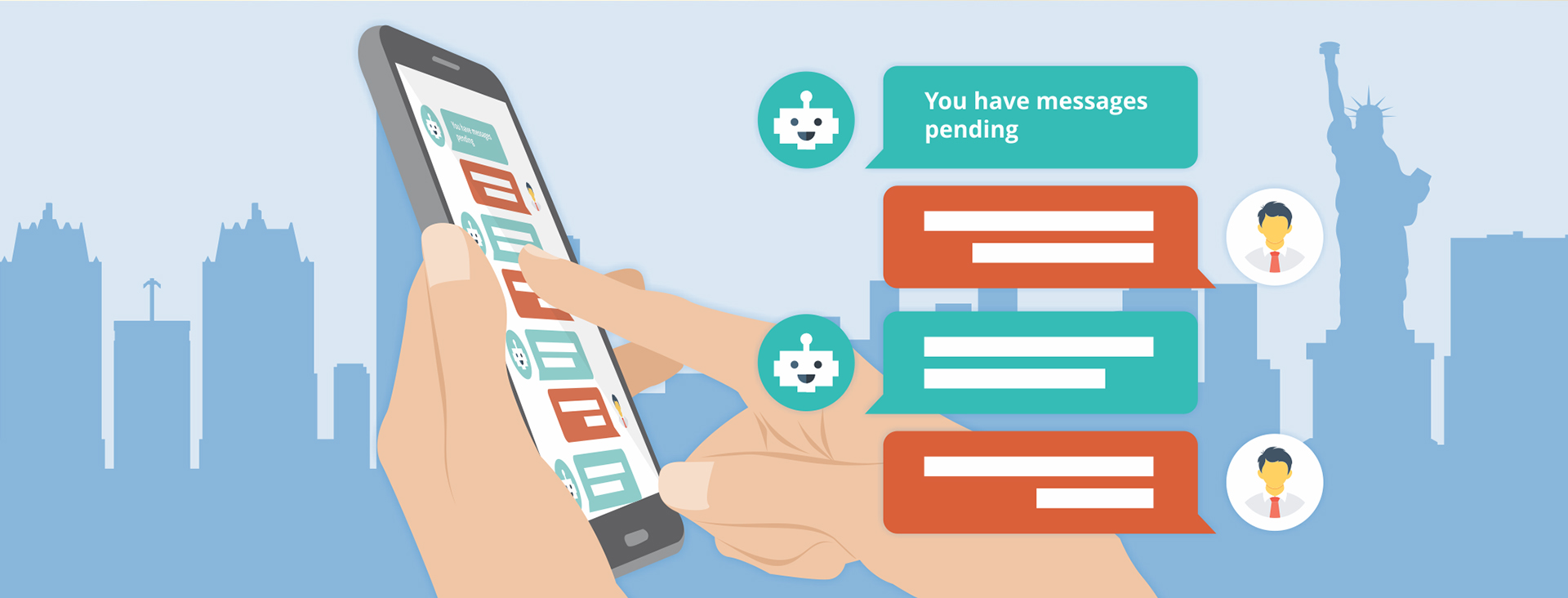
Attract Customers And Increase Conversion Rates Using Chatbots
The chatbot market is currently valued at $113 million, and is set to grow to $994.5 million by 2024. With the rise of users engaging with messaging apps like Slack, Facebook Messenger and Telegram, it is no wonder that the rise in market share is meteoric.
Chatbots are being increasingly deployed in helping enhance customer experience. These include providing customer service, presenting product recommendations and engaging customers through targeted marketing campaigns. Brands seem to be having great success and experiencing increased engagement and revenue, while deploying these bots.
But what exactly is a chatbot? A Chatbot is a computer program designed to simulate conversations with human users. Essentially, a bot is an automated system of communication with users. Chatbots were designed to serve as a digital assistant, helping users for better online experience.
Virtual Force has extensive experience in designing chatbots for Facebook, Messengers and other platforms. Interested? Drop us a message here.
Chatbots are very useful not just during the time of transaction but also in reaching out to potential customers.
Bots are being used in every industry, and to good effect!
FINANCE
30% of the respondents said it could take up to 2 months to onboard a B2B client. A potential client can have on average eight different interactions with the bank during the onboarding process.
Automated processes based on bot technology have the potential to cut the onboarding process to a matter of minutes.
SALES & MARKETING
Chatbots are useful in sales and marketing as they help in lead filtering and identification, automated response to queries, information gathering and recording causing increase in response time, decrease in conversion time and boost in sales productivity.

NEWS
Chatbots’ usage in media and news is on the rise. Leading media outlets like the German Novibot and the English The Guardian newsbot are some of the examples. Organizations can send customized, tailor fit and on-demand news to its subscriber base on the basis of chatbot filters.
EDUCATION
Education industry has been known to adopt innovation in technology later than other sectors. However, in Deakin University in Victoria, Australia, development is in full swing to complete the first ever chatbot campus genie. This trend is being replicated elsewhere as well where chatbots, coupled with AI, machine learning and natural language processing are being used for automatic essay scoring, spaced interval learning, conversational course assessments & student ratings and student-centered feedback.

We, at Virtual Force, have observed that employing Chatbots to optimize business results in profits for our customers. The chatbots are designed to share popular products with customers that they might find useful and can act as a sort of personal shopper or concierge service to find the perfect gift, meal or night out for a customer. All with just a few basic questions.
Recently we partnered up with a firm to design a chatbot app to semi-automate a digital assistant on a platform for a client. The platform helped users with online ordering of basic necessities such as food, shopping, transport among others. The aim was to help users complete any tasks that they wish or need done without any of the hassle.
How it Works:
Starting a request links the user to an operator where they can describe whatever task they need done. Before an operator takes up the chat, the chatbot asks a series of questions to extract client need and expectations. These questions are intelligently structured to adapt according to the client responses. This helps the operator to save time and start with substantial information already extracted from a user.
45% of users around the world prefer chatbots for customer service.
— Chatbots Magazine (@chatbotsmag) April 12, 2018
I – The app authenticates user through an email or Facebook account. Once the user has created their account, they are taken to the dashboard.
II – The dashboard has the option to directly start a request or pick from one of the categories (like ordering food, shopping, transport, bookings, etc).
III – Operators can communicate with users and fulfill their requests. If the task is billable, operators can provide a quotation with the amount to the user. If the user accepts and the task is completed, they can charge the user for the quoted amount.
IV – There is also an admin panel, where the admins can view user data and chats. They can add or edit any missing profile information as well. The operator module on LiveChat has a separate admin panel where operators can be managed.
Technology Used:
I – For the operator panel, we used LiveChat services. LiveChat has a chat API and a ticketing system for the customers.
II – For Payments, we used Stripe API. Users can enter their choice of payment in the app (VISA,Mastercard, etc). Operators can charge the user directly through Stripe dashboard.
The chatbot system is successfully deployed with our client, who continues to use it till this day. The chatbot has helped bridge gaps between client and the company. It has also helped reduced response time by a significant margin.
If you are interested in making your own chatbot on an independent platform or using Facebook bots to bring in more customers, drop us a message here.
READ MORE: